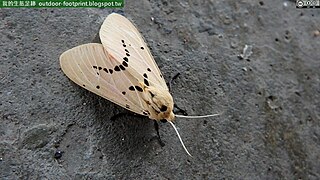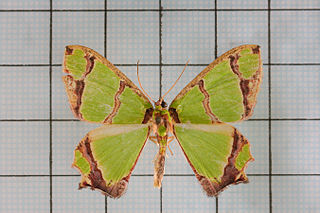
Theudebert I was the Merovingian king of Austrasia from 533 to his death in 548. He was the son of Theuderic I and the father of Theudebald.
Agathias Scholasticus was a Greek poet and the principal historian of part of the reign of the Roman emperor Justinian I between 552 and 558.

Ján Kollár was a Slovak writer, archaeologist, scientist, Lutheran pastor, politician, and main ideologist of Pan-Slavism.

Tarucus nara, the striped Pierrot, is a small butterfly found in Sri Lanka and south India that belongs to the lycaenids or blues family.

Troglocaris anophthalmus is a species of freshwater shrimp in the family Atyidae. It lives in karstic caves in Bosnia and Herzegovina, Croatia, Italy and Slovenia. Although morphologically similar across its 500-kilometre (310 mi) range, molecular phylogenetics suggests that there are four or five cryptic lineages with more restricted ranges, although one such lineage does range unusually widely for a troglobite – over 300 kilometres (190 mi).
Jisha-bugyō (寺社奉行) was a "commissioner" or an "overseer" of the Tokugawa shogunate in Edo period Japan. Appointments to this prominent office were always fudai daimyōs, the lowest-ranking of the shogunate offices to be so restricted. Conventional interpretations have construed these Japanese titles as "commissioner" or "overseer".

Spilarctia is a genus of moths in the family Erebidae. The genus was erected by Arthur Gardiner Butler in 1875.

Patania is a genus of moths of the family Crambidae described by Frederic Moore in 1888.

Mocis is a genus of moths in the family Erebidae. The genus was erected by Jacob Hübner in 1823.

Agathia is a genus of moths in the family Geometridae described by Achille Guenée in 1858.

Kallima, known as the oakleaf or oak leaf butterflies, is a genus of butterflies of the subfamily Nymphalinae in the family Nymphalidae. They are found in east, south and southeast Asia. Their common name is a reference to the lower surface of their wings, which is various shades of brown like a dead leaf.

Heterolocha is a genus of moths in the family Geometridae described by Julius Lederer in 1853.

Aglais caschmirensis, the Indian tortoiseshell, is a species of nymphalid butterfly found in the northern regions of the Indian subcontinent, primarily in the Himalayas.
The 557 Constantinople earthquake took place on the night of December 14. This earthquake, described in the works of Agathias, John Malalas, and Theophanes the Confessor, caused great damage to Constantinople, then capital of the Byzantine Empire in a region frequently afflicted with earthquakes. More minor quakes had preceded the large event, including two in April and October respectively. The main quake in December was of unparalleled ferocity, and "almost completely razed" the city. It caused damage to the Hagia Sophia which contributed to the collapse of its dome the next year, as well as damaging the walls of Constantinople to the extent that Hun invaders were able to penetrate it with ease the following season.

Agathia magnificentia is a moth of the family Geometridae first described by Hiroshi Inoue in 1978. It is found in Taiwan.
Laelia exclamationis is a moth of the family Erebidae first described by Vincenz Kollar in 1848. It is found in Sri Lanka, India and Taiwan.

Onoguris, renamed as Stephanopolis in the Byzantine period, was a town in Lazica recorded by Byzantine historian Agathias in his narration of the Lazic War between the Byzantine Empire and the Sasanian Empire. Its exact location is still under study.














